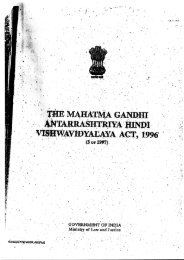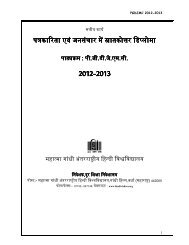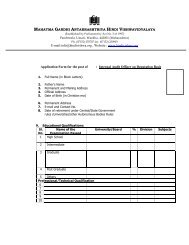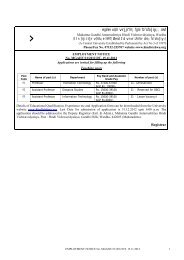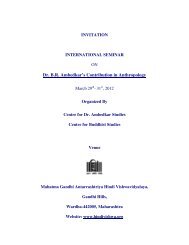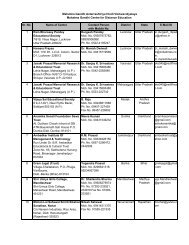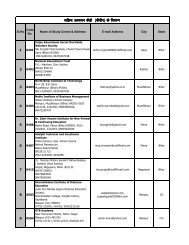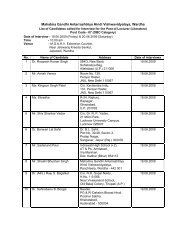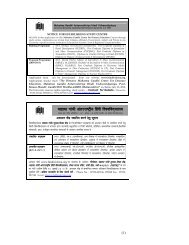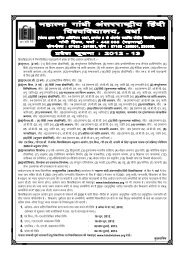Mamta Kalia
Mamta Kalia
Mamta Kalia
You also want an ePaper? Increase the reach of your titles
YUMPU automatically turns print PDFs into web optimized ePapers that Google loves.
It is for these reasons that the Roman<br />
script is being used for writing Sarnami.<br />
The assumption is that if the script is<br />
Roman, it will be easier to understand<br />
and even people of other languages will<br />
be able to read it. But the question of<br />
understandability still remains since the<br />
readers do not understand the words.<br />
The Roman script has been accepted<br />
specifically for achieving universal<br />
readability of Sarnami because the<br />
primary basis for the global study of<br />
Sanskrit language and literature is the<br />
Roman script. In countries like Suriname,<br />
colonizers wrote down in Roman script<br />
whatever Indian labourers said– for easy<br />
remembrance and also so that the names<br />
of these people could be pronounced<br />
correctly. Subsequently, the children of<br />
these labourers did their studies in<br />
schools using the Roman script and they<br />
started writing their dialect too in the<br />
same script which eventually was<br />
recognized by the government as the<br />
Sarnami language.<br />
There has been progress in the spread<br />
of Hindi in the Netherlands during the<br />
last five decades but generally there have<br />
been a lot of hurdles to its uninterrupted<br />
growth. Since here too Dutch is the<br />
language used in official transactions and<br />
in office jobs as in Suriname, the new<br />
generation gives primary importance to<br />
Dutch and focuses its entire attention<br />
on it. And the guardians too desire the<br />
same so that their children can have<br />
a meaningful future.<br />
In Europe there are about twenty-<br />
five lakh people whose mother tongue<br />
is Hindi and who speak Hindi. In the<br />
Netherlands, hurdles have come in the<br />
way of the growth of Hindi from Sarnami<br />
language too. There has been universal<br />
and open opposition to Hindi several<br />
times in the past from movements that<br />
promote Sarnami. The Sarnami<br />
movements were led by students of Leiden<br />
University in the decade of the 1970s.<br />
Once, in a Hindi conference organized<br />
at Paramaribo, the supporters of Sarnami<br />
did not only oppose Hindi but declared<br />
Sarnami as the original language of their<br />
ancestors, though even at that time a<br />
few people gave importance to Hindi<br />
and accepted that it is the mother<br />
language of Sarnami.<br />
In Holland, in the 50s, Surinamese<br />
Indians were very few but whoever was<br />
there was kept involved in the promotion<br />
of Hindi by an organization called Manan.<br />
Through this organization, Hindi was<br />
promoted in temples, schools and other<br />
institutions.<br />
It was Prof Fogel who began the<br />
teaching of Hindi language in Leiden<br />
University. Subsequently other<br />
universities too were influenced by Hindi<br />
and they too have started teaching Hindi.<br />
As in other countries of Europe, in<br />
the Netherlands too Hindi received less<br />
attention compared to Sanskrit and it<br />
remained a second-grade language. But<br />
in spite of that, it has remained the<br />
language of livelihood for the Dutch-<br />
Hindi scholars of the Netherlands. Also,<br />
April-June 2010 :: 147




